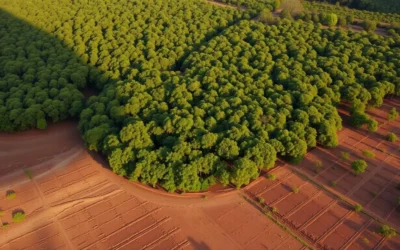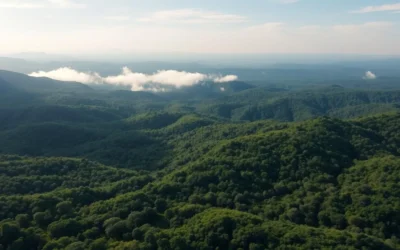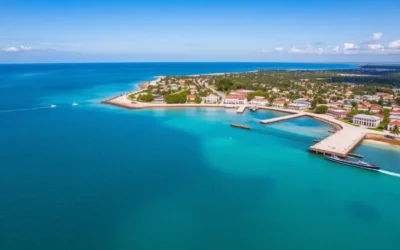Getting There & Planning Your Journey
Reaching Marolambo National Park requires careful planning and a spirit of adventure. The park straddles four regions of Madagascar: Atsinanana, Vatovavy, Vakinankaratra, and Amoron’i Mania. Most visitors access the park through the town of Fandriana, where Madagascar National Parks maintains its main administrative office.
From the capital city of Antananarivo, you’ll need to:
- First travel to Ambositra (approximately 250 km or 155 miles south)
- Then continue to Fandriana (about 45 km or 28 miles east of Ambositra)
- From Fandriana, a 4×4 vehicle is essential for the final leg to the park entrance
The journey from Antananarivo to the park can take 8-12 hours depending on road conditions, which can deteriorate significantly during the rainy season. Many travelers choose to break up the journey with an overnight stay in Ambositra, known for its woodcarving artisans.
Ready to Start Your Madagascar Adventure?
Book your flights to Madagascar and begin your journey to one of the world’s most unique biodiversity hotspots.
Best Time to Visit Marolambo National Park
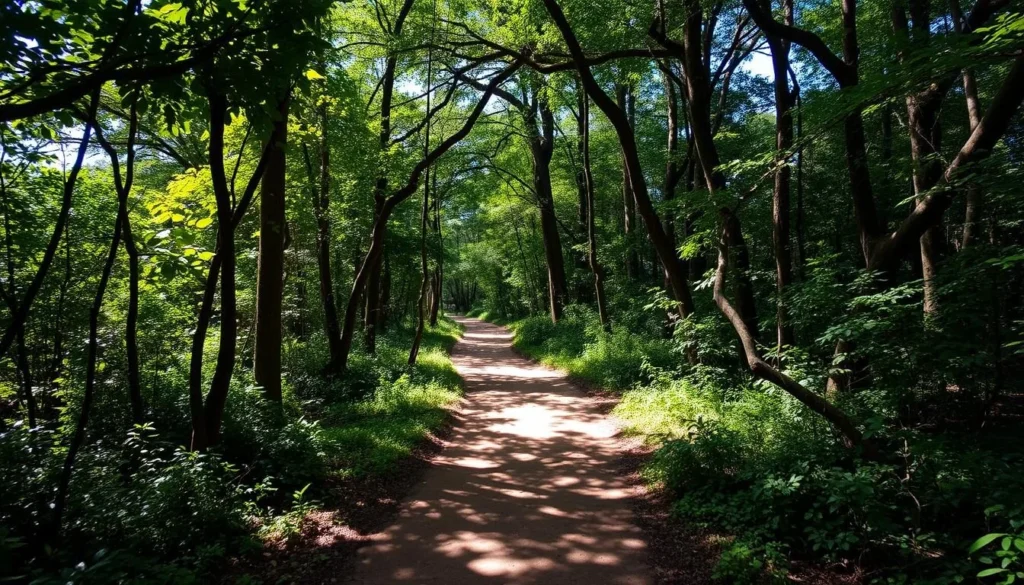
Marolambo National Park experiences a humid tropical climate with distinct wet and dry seasons that significantly impact travel conditions and wildlife viewing opportunities.
| Season | Months | Conditions | Recommendation |
| Dry Season (Recommended) | May to October | Lower rainfall, cooler temperatures (18-25°C/64-77°F), more accessible roads | Ideal time to visit |
| Wet Season | November to April | Heavy rainfall, warmer temperatures (22-30°C/72-86°F), difficult road conditions | Not recommended |
The park receives significant rainfall, particularly during the wet season when cyclones can affect the eastern regions of Madagascar. During this time, roads may become impassable, and hiking trails can be dangerously slippery.
Pro Tip: The absolute best months to visit are June through September, when you’ll enjoy clearer skies and more comfortable hiking conditions. This period also offers better opportunities for wildlife spotting as animals are more active during cooler weather.
Getting Around Locally
Once you’ve reached the park, getting around requires either hiking or using specialized transportation. The terrain within and around Marolambo National Park is challenging, with limited infrastructure.
Transportation Options:
4×4 Vehicles
Essential for accessing the park from nearby towns. Many visitors arrange transportation through tour operators in Antananarivo or Ambositra before departure.
Motorcycles
Local guides sometimes use motorcycles to navigate certain areas, though this is not recommended for visitors unfamiliar with the terrain.
On Foot
Most exploration within the park is done on foot via hiking trails. Expect rugged terrain and prepare for back-packing through challenging landscapes, especially in the eastern part.
Kayaks
The park offers a kayak tour that allows visitors to cross through the heart of the forest to the towns of Mananjary and Mahanoro, providing a unique perspective of the ecosystem.
Explore Madagascar Your Way
For the ultimate flexibility in exploring Marolambo and beyond, consider renting a 4×4 vehicle with an experienced driver who knows the challenging terrain.
Where to Stay
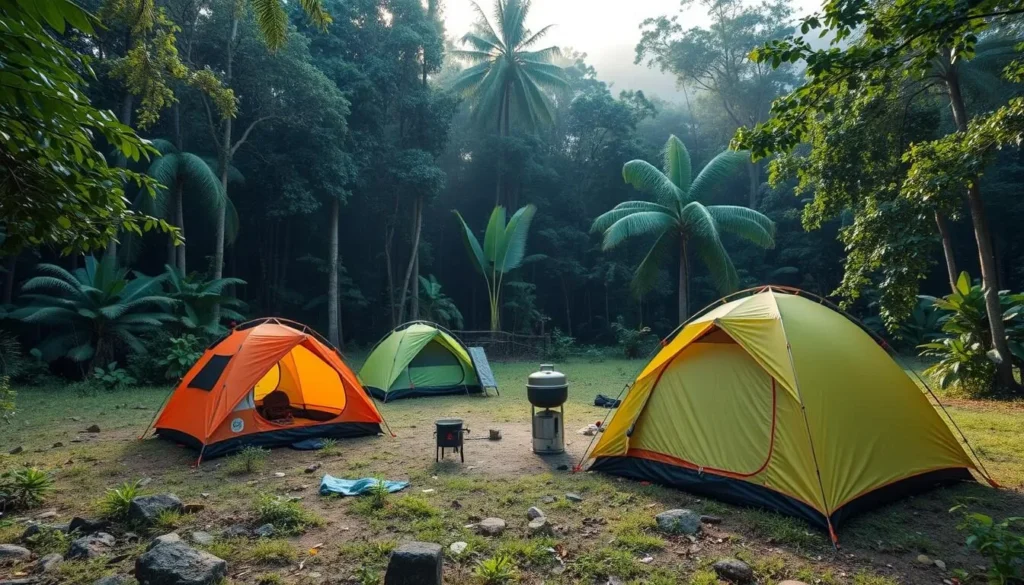
Accommodation options in and around Marolambo National Park are limited, reflecting its remote location and undeveloped tourism infrastructure. Currently, there are no formal lodges or hotels within the park itself.
Accommodation Options:
Wilderness Camping
The primary option for staying within the park boundaries is wilderness camping. You’ll need to bring all your own equipment, including:
- Waterproof tents
- Sleeping bags rated for humid conditions
- Cooking equipment
- Water purification systems
Fandriana Accommodations
The town of Fandriana, where the park’s main office is located, offers basic guesthouses and small hotels. While simple, these provide a roof over your head and a base for day trips into the park.
Expect modest rooms with essential amenities only. Electricity may be intermittent, and hot water isn’t guaranteed.
Ambositra Hotels
For more comfortable accommodations, consider staying in Ambositra and making longer day trips to the park. This town offers several hotels with more reliable amenities and services.
The trade-off is a longer commute to the park (approximately 2-3 hours each way), which limits your time for exploration.
Find Your Base Camp
Book accommodations in Fandriana or Ambositra to serve as your base for exploring Marolambo National Park.
Dining & Local Cuisine
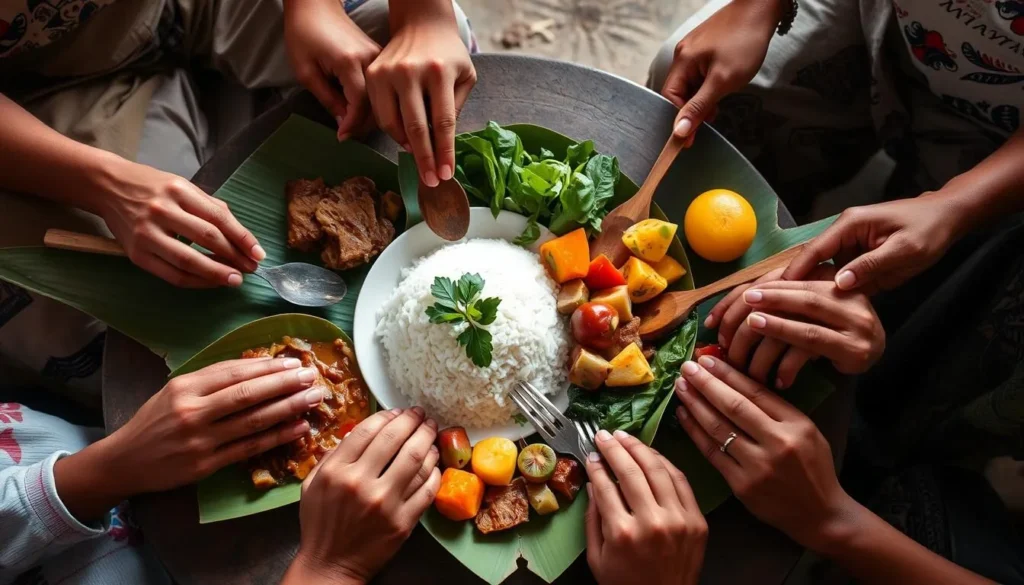
Dining options around Marolambo National Park are limited and simple. There are no restaurants within the park itself, so visitors need to plan accordingly.
Food Options:
Self-Catering
Most visitors bring their own food supplies, especially if camping within the park. Stock up on non-perishable items in larger towns like Ambositra or even Antananarivo before heading to Marolambo.
Basic supplies like rice, beans, and some fresh produce can be purchased in Fandriana, but selection is limited.
Local Eateries
In Fandriana and surrounding villages, you’ll find simple “hotely” (small local restaurants) serving traditional Malagasy cuisine. These establishments offer affordable, home-cooked meals centered around rice with accompaniments.
Don’t expect menus; typically, there are one or two daily options available.
Traditional Malagasy Dishes to Try:
Vary sy Laoka
The staple meal consisting of rice (vary) served with accompaniments (laoka) such as zebu meat, beans, or vegetables.
Ravitoto
Cassava leaves pounded into a paste and typically cooked with pork or other meat.
Romazava
A traditional beef stew with mixed greens and ginger, considered Madagascar’s national dish.
Dining Tip: If staying with local communities, you may be invited to share meals. This is both a privilege and an opportunity to experience authentic Malagasy hospitality. Bringing small gifts like coffee or tea to share is appreciated.
Attractions, Sightseeing & Activities
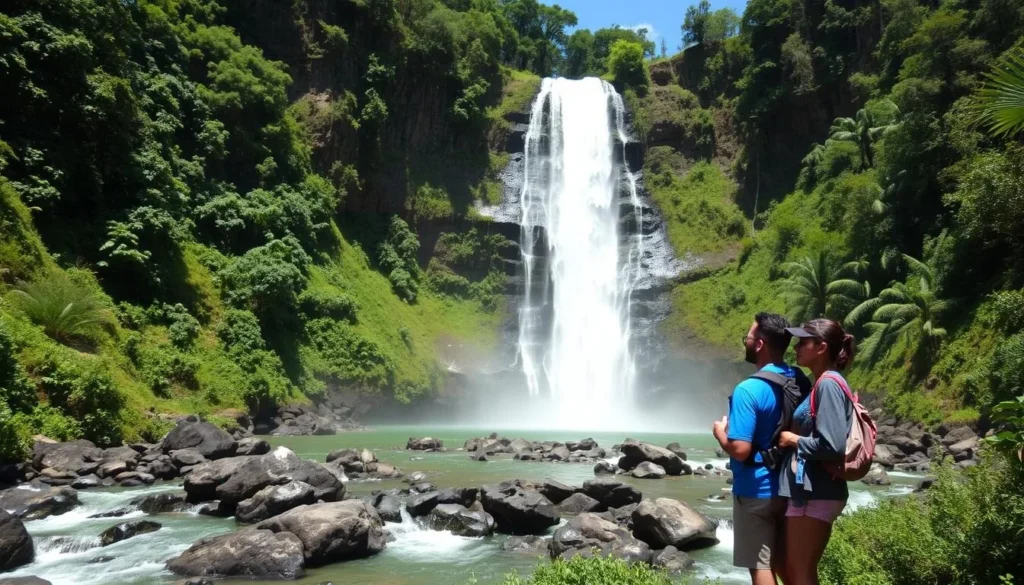
Marolambo National Park offers several unique attractions and activities for nature enthusiasts and adventure seekers. While tourism infrastructure is minimal, the park’s untouched wilderness provides authentic experiences for those willing to venture off the beaten path.
Top Attractions:

Mid-Altitude Rainforest
Explore the park’s primary attraction – its pristine mid-altitude rainforest ecosystem. These forests harbor incredible biodiversity and are characterized by dense vegetation, epiphytes, and a multi-layered canopy.
Guided hikes through the forest offer opportunities to spot endemic plant species and wildlife while learning about the ecosystem’s importance.
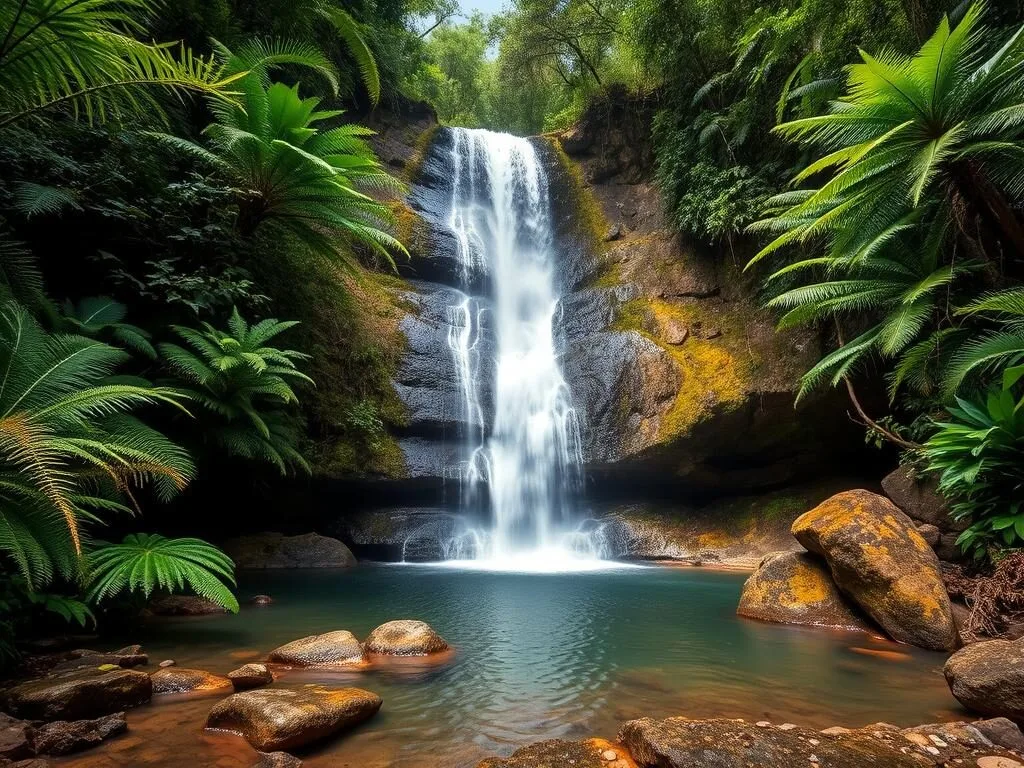
Andrevaronina Waterfall
Visit the spectacular Andrevaronina waterfall, one of the park’s most picturesque natural features. The tour to this waterfall includes trekking through the heart of the forest and offers excellent opportunities for photography.
The journey to the waterfall is as rewarding as the destination itself, with chances to spot birds and lemurs along the way.
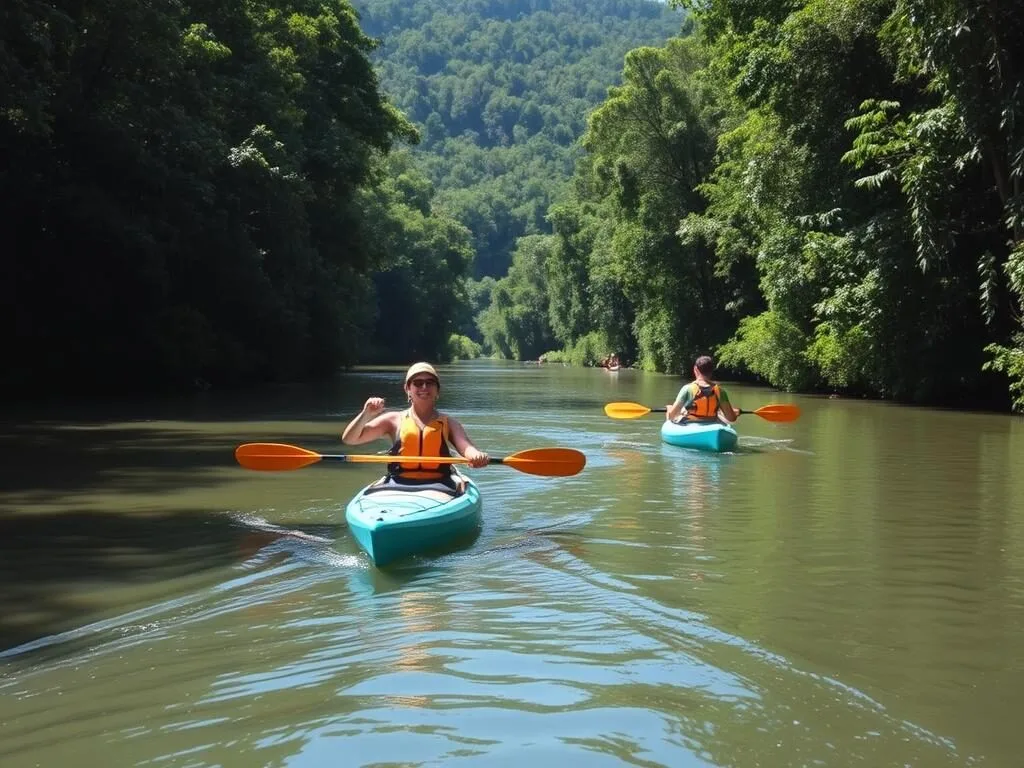
Kayak Tours
Experience the park from a different perspective on a kayak tour through its waterways. This unique activity allows visitors to cross through the heart of the forest to the towns of Mananjary and Mahanoro.
The kayak tour is accessible by a 4-hour drive from Fandriana and offers a combination of adventure and nature observation.
Experience Marolambo’s Natural Wonders
Book guided tours and activities to make the most of your visit to this remote wilderness.
Cultural Spots & Festivals
While Marolambo National Park is primarily known for its natural features, the surrounding communities offer rich cultural experiences that provide insight into traditional Malagasy life and customs.
Cultural Experiences:
Traditional Villages
Visit communities around the park to experience traditional Malagasy village life. The area is home to several ethnic groups, each with their own customs and traditions.
Local guides can arrange visits to villages where you can learn about traditional architecture, farming practices, and daily life.
Sacred Sites
The forest contains several sites considered sacred by local communities. These places of sacrifice (sorona) are where rituals and ceremonies take place.
Visitors should only visit these sites with permission and accompanied by local guides who understand the cultural protocols.
Seasonal Festivals and Ceremonies:
| Ceremony | Timing | Description |
| Avandrazana | Before rainy season (October) | Ceremonial cleaning of ancestral tombs, an important ritual in Malagasy culture |
| Santabary/Satabokatra | Rice harvest (May-June) | Celebration involving zebu slaughter to give thanks for a successful harvest |
| Famadihana | July-September | The famous “turning of the dead” ceremony where ancestors’ remains are rewrapped in fresh silk shrouds |
Cultural Tip: It’s considered taboo (fady) to bring pork products into the forest. Respect for local customs and traditions will enhance your experience and relationship with local communities.
Nature & Outdoor Experiences

Marolambo National Park is a biodiversity hotspot, home to numerous endemic species of flora and fauna. The park’s varied ecosystems provide excellent opportunities for wildlife observation and nature photography.
Wildlife Highlights:
Lemurs
The park is home to several endangered lemur species, including:
- Varecia variegata (Critically Endangered)
- Propithecus edwardsi (Endangered)
- Eulemur rubriventer (Vulnerable)
- Hapalemur griseus (Vulnerable)
Birds
Birdwatchers will appreciate the diversity of avian species, many of which are endemic to Madagascar. Early morning is the best time for birdwatching.
Look for colorful species like the Madagascar paradise flycatcher and various couas.
Plants
The park’s flora is equally impressive, with numerous endemic species including:
- Various palm species (Dypsis sp.)
- Endemic Sarcolaenaceae family plants
- Valuable hardwoods like Dalbergia (rosewood)
Outdoor Activities:
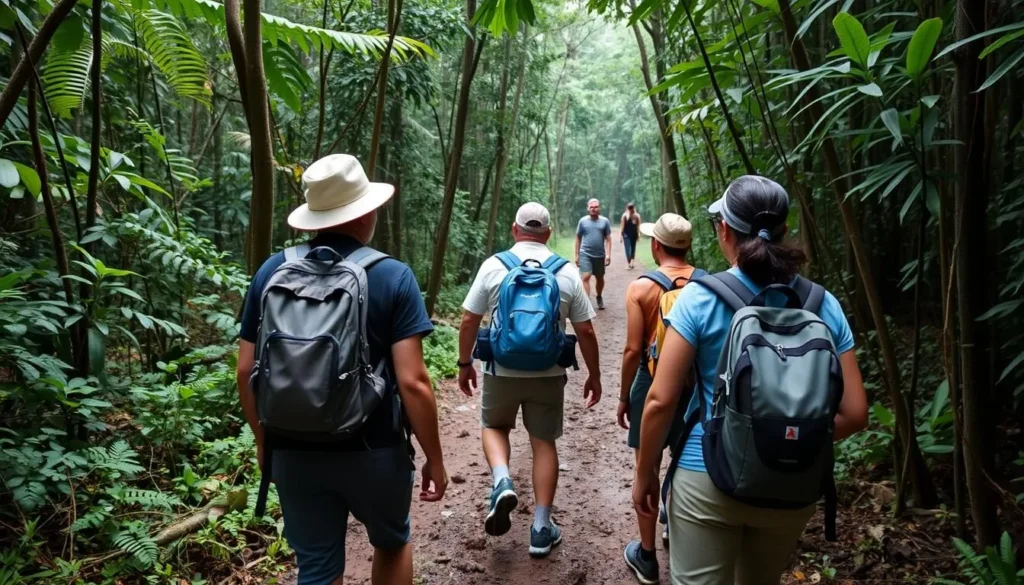
Guided Hikes
Several hiking trails of varying difficulty levels allow visitors to explore different parts of the park. All hikes require a guide, both for navigation and to enhance the educational experience.
Trails range from relatively easy 2-3 hour walks to challenging full-day treks through rugged terrain.
Wildlife Observation
Dedicated wildlife viewing excursions, particularly early morning or evening walks, offer the best chances to spot lemurs and birds in their natural habitat.
Night walks with guides can reveal nocturnal species like mouse lemurs and chameleons that are invisible during daylight hours.
Nature Tip: The park has 15 monitoring transects of 2 km each that are used for lemur research. Guided walks along these transects offer excellent wildlife viewing opportunities as the animals in these areas are somewhat habituated to human presence.
Safety, Etiquette & Local Customs
Visiting Marolambo National Park requires awareness of both safety considerations and cultural sensitivities. Being prepared and respectful will enhance your experience and contribute positively to local communities.
Safety Considerations:
Health Precautions
- Malaria prevention is essential – take appropriate prophylaxis and use insect repellent
- Bring a comprehensive first aid kit as medical facilities are extremely limited
- Purify all drinking water, even from seemingly clean sources
- Consider vaccinations for typhoid, hepatitis A, and rabies before travel
Environmental Hazards
- Heavy rainfall can cause flash flooding and make trails dangerous
- Leeches are common in humid areas – bring salt or insect repellent
- Some plant species have thorns or irritating sap – follow guide instructions
- Heat and humidity can lead to dehydration and exhaustion – pace yourself
Cultural Etiquette:
Respecting Taboos (Fady)
Fady (taboos) vary by region and community. Common ones around Marolambo include:
- Not bringing pork products into the forest
- Avoiding pointing at tombs or sacred sites
- Asking permission before photographing people or sacred places
Community Interactions
When visiting local villages:
- Greet elders first as a sign of respect
- Dress modestly (shoulders and knees covered)
- Ask permission before entering private spaces
- Small gifts like rice or school supplies are appreciated but not expected
Important: Always hire local guides through official channels like the Madagascar National Parks office. This ensures fair compensation to communities and provides you with knowledgeable companions who understand both the natural environment and cultural context.
Practical Travel Tips

Proper preparation is essential for a successful visit to Marolambo National Park. Here are practical tips to help you plan and enjoy your adventure.
Essential Gear:
Clothing
- Lightweight, quick-drying clothes
- Long sleeves and pants for protection
- Sturdy hiking boots with good grip
- Rain jacket or poncho
- Hat for sun protection
Equipment
- Waterproof backpack cover
- Headlamp or flashlight with extra batteries
- Water purification system
- Binoculars for wildlife viewing
- Dry bags for electronics
Camping Gear (if needed)
- Waterproof tent
- Sleeping bag suitable for humid conditions
- Sleeping pad
- Compact cooking equipment
- Biodegradable soap
Planning Advice:
Communication
Mobile phone coverage is extremely limited or non-existent within the park. Consider these options:
- Purchase a local SIM card in Antananarivo for use in towns
- Inform someone of your itinerary before entering remote areas
- Consider renting a satellite phone for emergency communication
Money Matters
Banking infrastructure is minimal in rural Madagascar:
- Bring sufficient cash (Malagasy Ariary) from larger cities
- No ATMs are available near the park
- Prepare small denominations for purchases in villages
- Budget for guide fees, park entrance, and community contributions
Park Fees: As of 2023, park entrance fees are approximately 55,000 Ariary (about $12 USD) per day for foreign visitors. Guide fees are additional and vary based on the duration and complexity of your visit. Contact the Madagascar National Parks office in Fandriana for the most current information.
Ready for Your Marolambo Adventure?
Start planning your journey to one of Madagascar’s most pristine wilderness areas.
Conclusion
Marolambo National Park represents Madagascar at its most authentic and untouched. While visiting requires effort, preparation, and a spirit of adventure, the rewards are immeasurable – pristine ecosystems, unique wildlife encounters, and cultural experiences few travelers ever witness.
As one of Madagascar’s lesser-known protected areas, Marolambo offers the rare opportunity to explore a biodiversity hotspot without crowds. Your visit not only provides unforgettable experiences but also contributes to conservation efforts and supports local communities who serve as the true guardians of this remarkable wilderness.
Whether you’re trekking through mid-altitude rainforests, kayaking along pristine waterways, or connecting with local cultures, Marolambo National Park promises the authentic Madagascar adventure that intrepid travelers dream of discovering.
The above is subject to change.
Check back often to TRAVEL.COM for the latest travel tips and deals.

